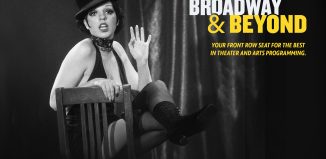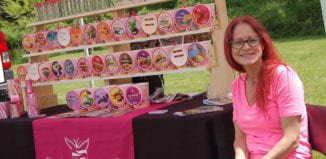Nature Matters: The Horseshoe Crab — A brighter future for a living fossil?
By John L. Turner

Spending the first five years of my life in Flushing situated in central Queens, I knew nothing of horseshoe crabs (Limulus polyphemus). My first encounter, after moving to Smithtown, was at the age of six during a visit to Cordwood Beach at the southern edge of Stony Brook Harbor. As I waded in the water these strange domed creatures were around us, moving slowly in the sand, animals so otherworldly different in appearance than any other thing I had seen in my young life.
I don’t know when he learned this but my friend Tommy, a several year veteran of the beach scene, yelled loudly to watch out for their tails because they sting and I’d get hurt! Unfortunately, Tommy was perpetuating a false and unfortunate myth, one that has caused far too many crabs to be hurt and killed, as this remarkable and novel species is utterly harmless. In reality, as the passing decades have illustrated all too well, horseshoe crabs have considerably more reason to fear humans than we do them.
This fear is borne out by numbers, numbers as alarming as they are staggering. Over the past quarter century more than four million horseshoe crabs have been killed in New York alone for use as bait in the American eel and whelk fisheries. As of now, the NYSDEC allows for 150,000 crabs to be “harvested” annually, as it has for each year of the past decade, although to the agency’s credit, they could allow more than twice that amount based on the annual allotment of the 13-state Atlantic State Marine Fisheries Commission (ASMFC) which sets crab quotas for the thirteen east coast states that are members of the Commission.
This will change if Governor Kathy Hochul signs into law a bill (Assembly bill 10140/Senate bill 3185-A) the New York State legislature passed earlier this year which bans commercial crab harvest. It also bans the harvest of crabs for medical reasons but more about that later.
Horseshoe crabs, which are not crabs at all but most closely related to scorpions and spiders, are often referred to as living fossils due to how far back they appear in the fossil record. Crabs reminiscent of the four existing species date back 450 million years ago to the Silurian Period of the Paleozoic Era and, remarkably, horseshoe crab fossils from the Mesozoic Era some 245 million years ago appear almost identical to modern-day species, a span many hundreds of times longer than humans have been on Earth. Now that’s an effective body design!
Talking about the crab’s body, it consists of three basic parts: the horseshoe-shaped main body known as the prosoma to which is hinged a middle section, this part distinctive as each side contains half a dozen backward pointing spines. The middle is connected to the crab’s tail or telson, reportedly used by native Americans and early colonists as spear tips used for impaling eels and other fish. The telson is not used for stinging or stabbing (the horseshoe crab can’t do these things) but is used to right a crab overturned in a strong shoreline surf typically during mating.
If you turn a horseshoe crab upside down, cradling its prosoma in your hand, you’ll see other key body parts protected by the shell. Immediately jumping into view are the six pairs of legs, probably moving around wildly as you hold the animal in a position it finds disturbing.
The first two smaller leg pairs are used to place food in the crab’s mouth which is situated in the middle of the legs, surrounded by them, and the other five pairs are used to help the crab walk, especially the legs closest to the tail. The first of these five pairs of legs, the ones next to the legs used for feeding, are different between males and females and are diagnostic in determining sex. With males, the ends of these legs contain claspers which look like tiny boxing gloves, making them distinctive from the other legs the male crab has; in females these legs look the same as all the others. Males use these claspers, well, to clasp the shell edge of the female with whom he is mating.
Between the legs and the tail are the animal’s gills. Known as book gills because the gills are laid out like the pages in a book, the 150-200 “pages” per each of the five gills provide an amazing surface area the crab uses to absorb dissolved oxygen from the water — about 30 square feet of surface area! This is a major reason why crabs can survive in areas with lower oxygen levels. The crab also uses the gills to move through the water as it fans the gill covers synchronously.
Another distinctive aspect of horseshoe crab are their eyes — all ten of them! The two lateral eyes on each side of the body are, by far, the most noticeable and were closely studied for several decades, helping scientists to learn some basic aspects of animal vision. These are compound eyes with each one containing up to one thousand photoreceptors; these photoreceptors allow for the crab to see to each side, up and down, and forward and backward. They are about 100 times as large as the photoreceptors — rods and cones — situated in our eyes.
And internally, there’s some pretty fascinating stuff going on. Take their blood. We humans bleed red, having blood that is iron based. Not so with horseshoe crabs. Their blood is turquoise colored because it is copper based. It is also extremely sensitive to bacterial endotoxins with the blood clotting in their presence. This clotting agent, known as Limulus Amebocyte Lysate (LAL), is used on materials and medicines placed or injected in the human body such as vaccines or the fabricated joints used in knee and hip replacements to make sure they’re bacteria free. If you’ve had an operation you can thank horseshoe crabs for ensuring your safety!
Unfortunately, there is a downside to LAL — it is collected by bleeding horseshoe crabs via a needle inserted at the base of the tail — and approximately 15% die in the process and all survivors released back into the water are compromised at least temporarily. The good news is a synthetically manufactured alternative to LAL known as rFC has been developed which harms no crabs. rFC is widely used in Europe and is very likely to be approved for use in the United States later this summer, as well as in Asian countries.
If you spend time along the shore you’ve probably seen the shells of horseshoe crabs. If they’re dark brown (and stinky!) you’ve come across a deceased crab. You might also find crabs that are tan-colored. These aren’t dead crabs but rather the “unstinky” molts of crabs that were very much alive when they shed their outgrown exoskeleton. If you pick up one of these fragile structures and pinch the sides you might see a crack along the edge of the shell where the top and bottom meet. It is through this seam from which the molting crab emerges, casting off its old skin, so to speak. Horseshoe crabs molt as many as eighteen times during their 25-year lives (assuming they’re not caught for bait) as they grow from tiny crabs to dinner-plate size animals.
Drawn by the full (especially) and new moons in May and June, (actually the attraction is the higher than usual tides caused by these moons rather than the moon phases themselves) horseshoe crabs come to the water’s edge to spawn. You might find several smaller males swarming around a large female with one male attached by the aforementioned claspers. She lays the eggs in the well oxygenated sand at the interface of land and water. A healthy large female can lay upwards of 90,000 tiny green colored eggs per season. These eggs are vital food for a number of other animals. At least one dozen species of shorebirds feed upon these tiny but protein rich little packets, including Ruddy Turnstones, Semipalmated Sandpipers, and the federally threatened Red Knot. Many fish eat them too such as bluefish and weakfish. Loggerhead turtles, a federally endangered species, prey on the adults.
We have a complex and ever evolving relationship with horseshoe crabs. We’ve harvested them by the truckload to be cut up into quarter pieces for bait, yet we spend time walking beaches to return stranded crabs to the water or flip right-side up crabs on their back in order to save their lives. We have ground them up for fertilizer but also lead moonlit “horseshoe crab appreciation” hikes highlighting their fascinating life histories.
We still retain unfounded fears they sting, stab, or bite but delight in watching them during their annual mating rituals as they spawn billions of eggs, some of which provide sustenance to shorebirds traveling between hemispheres. But with the advancement of rFC and its promise to eliminate crab mortality from bleeding and the legislation to stop the commercial harvest awaiting the Governor’s action, we have a chance to write a new, much more positive chapter in the horseshoe crab-human relationship, one that no longer views crabs as only a commodity to be used and abused.
A resident of Setauket, author John L. Turner is conservation chair of the Four Harbors Audubon Society, author of “Exploring the Other Island: A Seasonal Nature Guide to Long Island” and president of Alula Birding & Natural History Tours.







